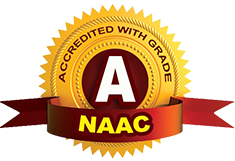Trade Secrets
120 + PATENT FILED & 57 COPYRIGHTS ARE GRANTED
Secrete” information: information not generally known; has commercial value; person in control of the information has taken steps to keep it secret. Such a system is created where holders of secret information are not forced to part with to government or other bodies. Where secret information (best reports of chemicals and pharmaceuticals) is given to government, data to be kept secret. A
trade secret is information that provides a business with a competitive advantage.
History
WTO TRIPS agreement article 39.3 obliges WTO members to provide a period of data exclusively for safety and efficacy studies submitted by research based pharmaceutical and plant science for clearance. Priority information submitted to regulatory body shall be protected from unfair commercial usage. All WTO member countries have obliged to implement provisions since 1st January 2000.
Categories recognized as Trade secret
The following section provides examples of circumstances where trade secret protection was approved or denied. Courts have provided trade secret protection to:
- Formula
- Patterns
- Plans
- Designs
- Physical devices
- Processes
- Software
- Know-how
Please keep in mind that different courts may reach contrary conclusions concerning trade secret status with respect to what may appear to be identical matters.
Formula
Formula is a group of symbols that make a mathematical statement or a conventionalized statement expressing some fundamental principle or a representation of a substance using symbols for its constituent elements. It establishes a right direction for making something worthwhile or lucrative. A formula (i.e., a recipe that allows one to create a product) can be a trade secret.
Common formulas found to be trade secrets in the food, drug, and cosmetics industry include formulas for butter flavoring, cheese, breakfast cereal, seasoning for fried chicken, special diet rations for dogs, mixed alcoholic beverages, lipstick, and hair conditioner. The Coca-Cola Company has put numerous security measures in place to keep its formula a secret. In fact, the formula gives the Coca-Cola Company a significant business advantage in the soda market, as there is no other soda that tastes the same
Pattern
A pattern is a form, template, or model (or, more abstractly, a set of rules) that can be used to make or to generate things or parts of a thing. If the things that are generated have enough in common for the underlying pattern to be inferred or discerned, in which case the things are said to exhibit the pattern. The detection of underlying patterns is called pattern recognition.
Plan
A Plan is a proposed or intended method of getting from one set of circumstances to another. They are often used to move from the present situation, towards the achievement of one more objectives or goals. An inventor my seek protection for an article to be effective manufactured/prepared through a process that he has discovered/rediscover under this category if he is not in a position to reveal it fully (patenting).
Design
Design is a decorative or artistic work. It may also be termed as an arrangement scheme. Following categories of goods/inventions may be protected under designs
- Circuitry for an advanced minicomputer
- Colour TV circuitry
- Schematics for an analog circuit
- Plans and specifications for gears and rollers of a photo-processing machine plans for drilling equipment
- Plans and designs for a veneer dryer
- Molds for the manufacture of street markers
Physical devices
Physical device is a device that has some physical implementation. It is an actual piece of hardware, not an emulated device. It is used in manufacturing can be a trade secret. These devices include
- A device for manufacturing radio parts
- Machinery and equipment used to manufacture polyethylene
- Machinery and equipment used to manufacture saw grade diamonds
- A computer tool used to service microprocessor-based elevators, a tool for making a pressure-sensing mechanism
- A machine for inking carbon paper and ribbons, and an adhesive-tape machine
Process
Process is a generalized method of doing something, generally involving steps or operations that are usually ordered and/or interdependent. A process, method or technique used to make the final end product can also be a trade secret. Examples of processes found to be trade secrets include: ·
- A process to manufacture foam crash pads
- A process to treat metal, a process to manufacture fiberglass
- A method and procedure to manufacture epoxy resin rods
- A process to manufacture potassium sulfate
- A process for an environmentally sound method to manufacture coated paper
Know-how
Know-how is information that enables a person to accomplish a particular task or to operate a particular device or process. Information and experiential expertise related to using formulas or processes. Know-how can be a trade secret. Examples of trade secrets in this area include:
- Know-how pertaining to the construction of plant chemicals, methods for testing procedures to assure the quality of raw material
- Know-how to ascertain whether CAT scanning equipment and components are operating according to specifications and to identify malfunctions
- Methods to manufacture typewriters

